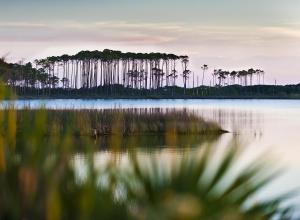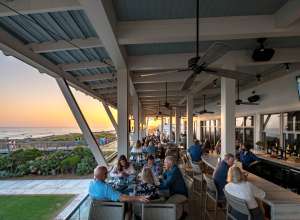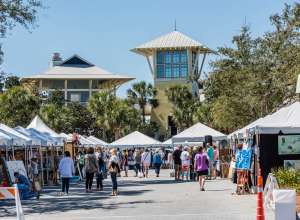Story
South Walton Sea Turtle Summer Season
July 31, 2013 by SoWal Staff

End of July Update: South Walton Turtle Watch (SWTW) is reporting the most current count of sea turtle nests is up to 55. Some of the first nests of the season are approaching 50-60 days and we should start to see hatchlings and/or their tracks to the water any day.
The season continues until October 31 and there is still much work to do to ensure a successful summer for these endangered creatures. There have been some unfortunate incidents of nests being tampered with by both humans and dogs. Please help the turtles by keeping your dogs on a leash and staying well back from the marked nests, as even footprints can trap the hatchlings as they make the trek to the Gulf.
If your children are interested in learning more about this fascinating species, join SWTW area coordinator, Valerie Lofton, at the Hidden Lantern in Rosemary Beach Thursday, August 1 at 2:30 p.m. for a book reading and sharing important information about sea turtles. Everyone is welcome.
---------------------------------
July 16, 2013 Sea turtle nesting season is in full swing and about halfway through here on South Walton beaches. It's been a busy summer so far and we are up to 47 nests - and counting!
With the recent deluge of rain and high surf, numerous nests have been washed over, but it remains to be seen how many hatchlings have survived in the existing nests. We are cautiously optimistic and hope for the best.
For 13 seasons, my husband and I have been a part of South Walton Turtle Watch (SWTW), a group of dedicated volunteers who monitor the beaches here every day from May to October. SWTW works very hard to ensure the survival of the turtles that nest on our beaches.
Part of the season is spent diligently looking for adult turtle tracks in order to mark the nests for monitoring, and the remaining season is spent watching for signs of nests hatching and ensuring as many babies as possible survive to make it safely to the Gulf waters.
Did you know that turtles that nest on South Walton beaches return to the very same beach to lay their eggs as adults? One of the most fascinating facts about these creatures that we work so hard to protect is why they migrate thousands of miles and eventually return to the very same beach from where they hatched to reproduce and lay their eggs, after approximately 25 years.
Scientists studying this phenomenon found that a certain region in the turtle’s genome is responsible for fighting parasites and diseases. The study concluded that returning to their home beach gives individuals an advantage to fighting off those diseases and parasites, and provides important information on genetic adaptation for the survival of their populations. It’s critical to maintain, to the best of our abilities, these nesting colonies as each location impacts their global survival in an ever changing environment.
Marine turtles are among the most endangered species in the world’s oceans. Scientists are trying to understand the reasons for the rapidly declining populations, despite the fact that the species are protected. Worldwide, over 15,000 species are threatened by extinction, and Loggerhead sea turtles, most common of our area’s nesting sea turtles, are no exception and are sadly on the Red List of Threatened Species.
You can help us help them by educating yourself and your children about the perils these beautiful creatures face in their long journeys. So far this season, we’ve had 18 of what is referred to as a “false crawl”. When the female turtle comes ashore, but does not dig her nest and lay her eggs, it’s considered a false crawl. Many factors contribute to this unfortunate occurrence, but the main one is human interference. The Leave No Trace Ordinance states that all items you bring to the beach must be removed when you leave. Below is a list of do’s and don’ts for human/turtle interactions:
- DO NOT use standard white light flashlights for viewing sea turtles.
- DO NOT shine any light on the sea turtle or its face.
- DO NOT take pictures using a flash.
- DO NOT touch or handle any sea turtle.
- DO NOT touch or handle sea turtle eggs or put anything in the nest.
- DO NOT block or stand in a turtle's path to the ocean.
- DO NOT disturb tracks left by adult or hatchling turtles.
- DO watch from a distance.
- DO stay out of sight.
- DO stay behind the sea turtle until she begins laying her eggs.
- DO remain quiet and still.
- DO leave the hatchlings in their nest.
- DO let them emerge & crawl to the water on their own.
- DO use only certified turtle safe lighting on barrier island beaches.
- DO fill in any holes you dig in the sand as holes can trap turtles and hatchlings.
Please use only certified turtle safe lighting on the beach Purchase certified turtle safe lighting HERE.
Please remove all items and trash you bring to the beach
Speaking of education, Valerie Lofton, SWTW area coordinator, will be at The Hidden Lantern in Rosemary Beach this Thursday, July 18, and again August 1 at 2:30 to talk about sea turtles and read to children about them. Everyone is welcome and it lasts about 30 minutes.
Remember that it’s against Federal laws to tamper with any endangered/threatened species. All turtles that nest on South Walton beaches are either on the endangered or threatened list.
South Walton Turtle Watch needs everyone to be aware of the importance of protecting and preserving the marine turtles nesting on our beaches. Please tell your family members, your friends and anyone you know that will be visiting us in the future what you’ve learned. Let us all be a part of ensuring these majestic and special creatures don’t vanish from our planet. Thank you for doing your part!
For more turtle information please contact the South Walton Turtle Watch Group at
http://www.southwaltonturtlewatch.org/ or 850-897-5228.
















